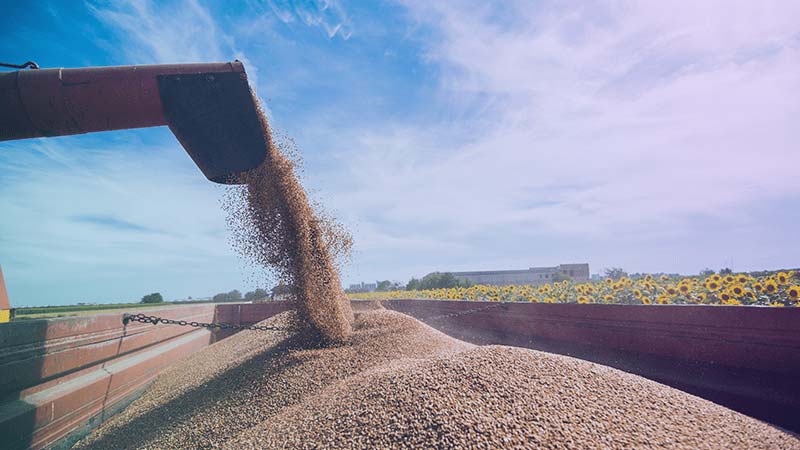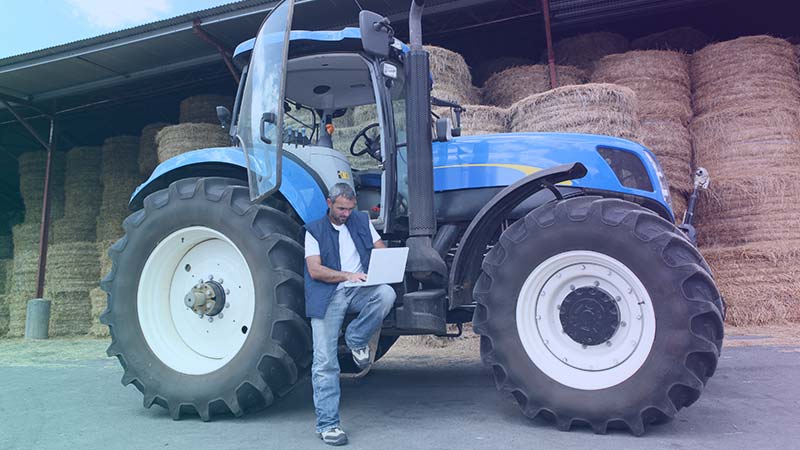Forget your perception of rural farmers tending to their crops by hand helped only by their sons and a few farm hands. Today’s farms, particularly those in the western world, are a technological marvel. Robots harvest crops, drones survey fields, and thermal imaging is used to identify the best places to plant seeds. Technology and the added efficiency that it brings are necessary if farms are going to continue being able to feed growing populations.
But some things are still done by hand. Despite all of the technological innovation that has become commonplace in farms across the world, even the most hi-tech of agricultural businesses still monitor storage levels of feed and crops by hand. As well as being hugely inefficient, human error in this job can create serious problems for the farm and the food supply chain beyond. But just like they have with every facet of farm work previously, farmers are yet again turning to technology for assistance. This time it is the IoT that is providing the much-needed solution.
MONITORING FEED LEVELS BY HAND IS INEFFICIENT AND INEFFECTIVE

Despite the overwhelmingly prevalent use of technology on farms, monitoring feed and crop storage levels remain a job for humans. Naturally, as human error creeps in, this creates a series of issues that cause widespread disruption to farms and the agricultural industry as a whole. As anyone who has ever spent even a day on a farm will know, work never stops. Carrying out a time-consuming check on storage levels, then, is a hugely inefficient waste of time that could be better spent tending to livestock or hundreds of other jobs. Inevitably, checking by hand leads to mistakes, too. Whether it’s misreading the levels or forgetting to check for a prolonged period, storage levels are at risk of running empty. Where feed is concerned, this can have a huge impact on the welfare of animals and their eventual produce. Only an emergency delivery of feed can rectify this issue, which means an additional expense that farms already on a tight budget must swallow. When it comes to crop storage, the reverse is true. If stock levels get too full without additional storage being sought, valuable produce is at risk of spoiling. Either way, one little mistake can push farm budgets to breaking point.
FARMERS ENTER THE AGE OF THE IOT WITH TANK MONITORING

It’s been a long time coming compared to the implementation of technology throughout the rest of the farmyard, but the rise of the IoT is enabling farmers to assign this laborious task to technology rather than humans finally. Farmers are now turning to remote, IoT-powered wireless monitoring devices to monitor stock levels for them. The devices, which can be installed in minutes without the need for wiring or connecting to a network, constantly monitor levels and send data to a cloud-based online dashboard. The dashboard can be accessed by farm staff from anywhere and on any device—all they need is an Internet connection. This means that they can monitor storage levels from practically anywhere in the world, without having to be there in person. The device will also send alerts once storage levels fall below or rise above a certain level. This allows employees to take immediate action to rectify the situation and avoid the issues that we discussed earlier.
All of the data that the monitoring device transmits is relayed across the Sigfox network, the world’s leading Internet of Things connectivity service. This network brings its own set of unique benefits to the table, which adds to the efficiency of the device. Because Sigfox uses a Low Power Wide Area Network (LPWAN), devices use very little battery power. This means that they will last for a very long time, but also that their battery life is incredibly predictable. There’s no danger of farms suddenly realizing the battery has run out. The low power nature of the network also means that ongoing subscription fees are incredibly affordable and well worth the investment when you consider the benefits.
Thanks to the remote monitoring devices, farms will be able to track storage levels and predict refill schedules accurately for the first time. This doesn’t just make farmers lives much easier, it will also save their business a significant amount of money. Rather than waste time monitoring storage levels, staff hours can be put to better use to increase the productivity of the farm. The cost of emergency deliveries will also be completely removed if the device is used correctly.
